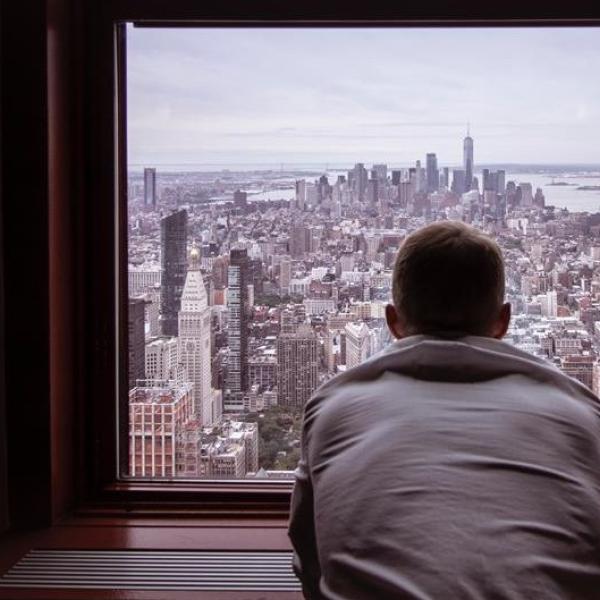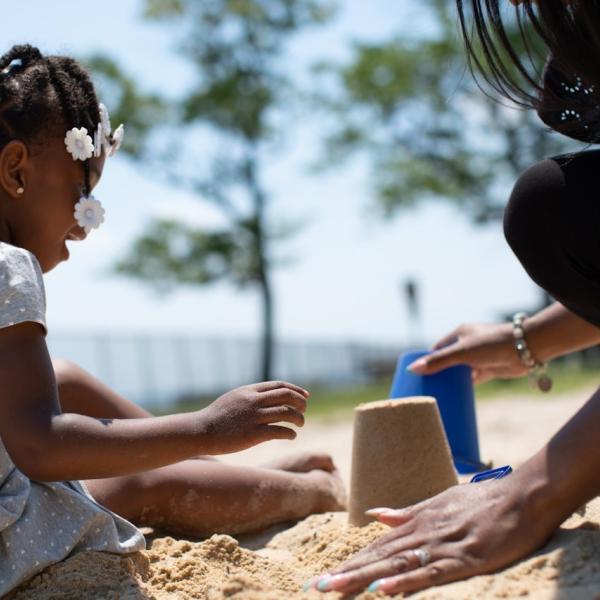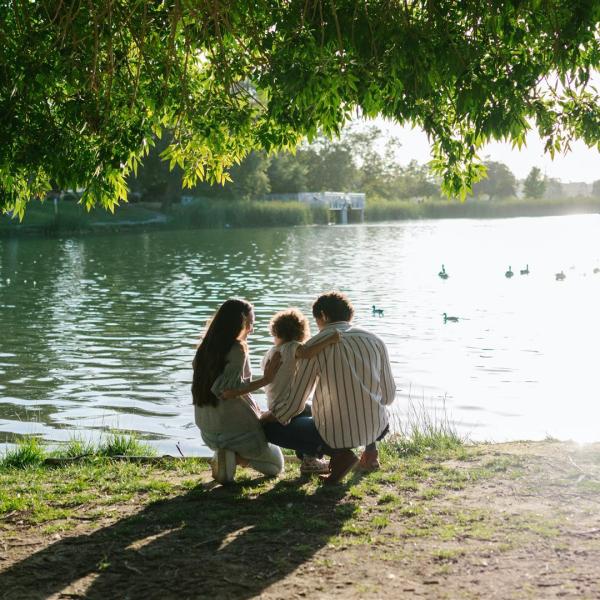A ready-made community: Sharon and Rich’s story
For Sharon and Rich, their church family has been an integral part of providing love, stability and community for their fostered child.
Our foster child joined our family in March 2020, just before the UK went into lockdown. And when I say family, I don’t just mean my husband, my birth children and myself. When I say ‘family’, as a minister in the Methodist Church, and as part of a small, supportive and tightknit community, the word reaches well beyond the four walls of our home.
My husband and I had a few conversations about fostering before we heard a Home for Good speaker at a conference. We bought the Home for Good book, read it, and felt compelled to act. We already knew of a few non-profit fostering agencies that we could have got in touch with right away, but having read the book, we felt nudged to get in touch with Home for Good first. We met with one of the team, who came round to our house to get to know us and explore those first steps of fostering with us. It was an inspirational meeting; she connected us with the agency we ended up working with, and she left us thinking, “This is definitely something we can do!”
Our house has four bedrooms, which meant we had that important spare bedroom. We live in a Manse – this is the name given to the house a minister lives in, provided by the church for the minister and their family – so our church give financially for the provision of our home. Because of this, our church family was integral to the whole process from the very beginning. They quite literally, and very practically, helped to provide a home for a child who needed one.
Our church has always been very outward facing. We are passionate about caring for the vulnerable and welcoming the lonely, so getting involved in fostering just felt like another way we, as church, could worship and serve. The Home for Good book says that including vulnerable children in our church community “authenticates our worship, cements our relationship with the Father to the fatherless and draws others to Him.” So from the beginning of this journey we understood that fostering would be bigger and broader than just us – it was going to be a whole church thing.
After almost exactly a year, we were approved to foster a primary school-aged child and were also prepared and willing to care for a child with additional needs. My husband had been working as a teaching assistant in a special educational needs school, and moving from that to full-time foster care felt like a natural and exciting change. We had a fantastic social worker who really helped us understand some of the challenges we might encounter as foster carers. She was incredibly thorough, and the process reminded me a little of training for ministry in that I felt that her assessment was as helpful for me as it was for her. I found it so interesting to explore our own support network with her. It was eye-opening and affirming to see in black and white who our points of contact were if ever we had any trouble, if ever we needed any help. Many of those listed as part of our support network were members of our church family. I think that part of that is because for us, church has been a ready-made community. It’s an instant extended family.
Not long after we were approved, our social worker told us about a little boy who was staying with an elderly couple in a short-term placement, but needed long-term foster carers and had to move immediately because the couple caring for him were shielding from COVID-19. We met him once at their house, and agreed with our social worker that we felt we could meet his needs and be family for him. He moved in the very next day. We had told people in our church when we were beginning the process, so from day one we had support behind us. And as soon as our foster child moved into our house, he became part of our community – even though it was months before we’d be in the church building together due to the pandemic. He would pop into our church Zoom calls and learn people’s names, and bump into members of the church family in the street. We’re really blessed to live close to others in the church, so often when we go for a walk we’ll meet friends who say hello. Each member of our community has a part they can play in helping him feel safe and loved.
Although lockdown certainly had its challenges, we have some really precious memories from our first year and a half together. Around Easter time, our foster child and I took a walk around the community to visit those still isolating at home. We visited about ten houses, and at every single one he was offered some chocolate, some cake or a drink – he was thrilled, and came home with arms full of treats! Before he was able to ride a bike, we’d go to the local shop together – Rich or me walking, him on his scooter. The shop was just a little too far for him to scoot all the way. So we got into the habit of taking a break or parking the scooter at the house of one of our church members. It was just a little thing, but it made a difference. And now, when we pass that house every day on the way to school, we’ll stop most days for a chat. Even this summer, our boy found himself drawn into a water fight with a neighbour– she was out watering her plants, and he was playing around her with his lightsaber, when she surprised him with a spray from her hose!
Communities, in all their varied forms, can play such a significant role in helping children experience stability, allowing them to feel safe, secure and supported and to experience consistent love and care. Because growing up our boy didn’t have a secure base, he’s unable to understand right now that we’re going to be there for him always. We’re hoping that over time, and perhaps with the help of some therapy, he will grow to learn that this is the truth. I think that at the moment, things must still be a little confusing for him; he still has contact with his birth family, but he’s also part of our family. But even though his understanding of family is full of intricacies and complexities, he is part of something bigger: our community of people who care about him. And we think he really loves that.
We celebrated with the whole church family when he had been with us for a year. We baked some cupcakes together, icing his name on the top, and we took them round to the people in our street. We told them, “We’ve been family for a year, and we’ve made you a cake so we can all celebrate.” This is his church, his neighbourhood and his family as well. This is what family truly is. It’s community at its best.
You might also be interested in

Stories
Two things I'd want carers and parents to know
Dan reflects on his experience of foster care and adoption, and shares two things he'd love every foster carer, adoptive parent and supported lodgings host to know
Read more
Stories
This really matters: Amara's* story
Amara shares with us her experience adopting her daughter, and her passion to see justice for Black children in care.
Read more
Stories
Preparing for the unknown: Jonathan's story
Jonathan reflects on the journey his family have been on as they prepare to welcome a little one into their home for the first time.
Read moreI would like to find out what is
going on in my area
Join our mailing list for the latest Home for Good news and ways to get involved.
Together we can find a home for every child who needs one.
£25 per month could help us create and collate inspiring articles and blogs that encourage and inform the families and communities who care for vulnerable children








 Thank you, you're giving:
Thank you, you're giving: